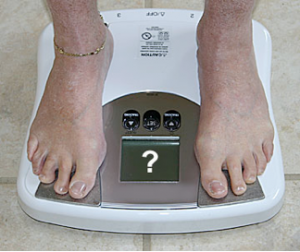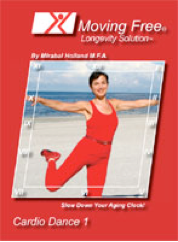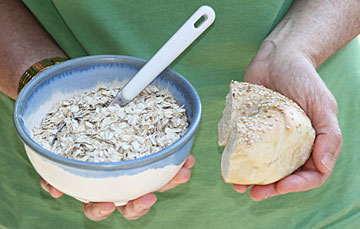 To weigh or not to weigh that is the question. Whether ‘tis nobler in the mind to suffer the slings and arrows of knowing ones outrageous weight, or to take arms against the budge by simply ignoring the scale and trying to eat less and exercise more. For some of us, the scale is a tool. For others it’s the enemy.
To weigh or not to weigh that is the question. Whether ‘tis nobler in the mind to suffer the slings and arrows of knowing ones outrageous weight, or to take arms against the budge by simply ignoring the scale and trying to eat less and exercise more. For some of us, the scale is a tool. For others it’s the enemy.
Some health and fitness professionals have made a compelling case for ignoring the scale, saying that measuring one’s percentage of body fat is the most accurate way to track ones fitness level because it indicates a healthy body composition regardless of height and weight. Whether you decide to use the scale or not it’s important to keep track of your percentage of body fat.
Here are some general guidelines according to the American Council of Exercise:
Body Fat % Women:
Fit: 21-24%
Average: 25-31%
Obese: > 32%
Body Fat % Men:
Fit: 14-17%
Average: 18-24%
Obese: > 25%
So why bother weighing yourself at all?
My personal prejudice is weigh yourself at least once or twice a week. I do, and I find that facing my weight on a regular basis helps me stay on track. Believe me there have been times when I’ve dreaded getting on the scale. But I do it anyway because no matter what it says, I feel relief. I find it liberating. Why? Because now I know where I am and what I need to do next. It helps me maintain a healthy weight. Also the scale I have, measures my body fat too so I am able to keep track of that at the same time.
In my practice I have helped hundreds of people lose weight. And most of them initially fight me about getting on the scale and I understand this because I know that terror. Part of the process of losing weight is to prepare one’s self to do it.
If you are not psychologically ready to lose, stepping on the scale can be a real turn off and actually deter you from losing weight. But once you’ll ready, facing that number can jumpstart your weight loss program and keep you motivated.
I give my clients a baseline of their body fat percentage and get them to use the scale. Then we set up a diet and exercise plan. You can lose weight by diet alone but a larger percent of your weight loss will be taken more from lean muscle mass than from body fat. The winning combination is to reduce calorie intake, do cardio every other day and strength training at least a couple of days a week. Cardio burns calories and strength training raises your metabolism and builds lean muscle mass while you are losing. Losing about 1% body fat a month and 1-21/2 pounds a week is considered safe and realistic.
So I’ve made my case for using the scale as a tool, and I hope you’ll try it when you are ready. Regardless, to be or not to be at a healthy weight should not be in question.
Send your questions to askmirabai@movingfree.com









